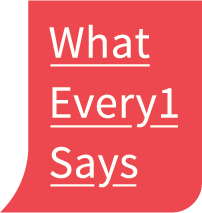The backbone of “Reading in Santa Barbara” was a series of four archival sessions in UC Santa Barbara’s Special Research Collections. These sessions have allowed us to position our own experiences as readers at UCSB in conversation with the experiences of historical readers more broadly. Throughout, we were concerned with the “reading communities” – or the social relationships produced by literature – that could come to light through archival research. How have institutional and bureaucratic decisions in the past contributed to how people experience literature in the current configurations of our campus community? In the larger Santa Barbara and California landscape, when does literature create social bonds and when does it contribute to social divisions? And how do certain genres inspire communities that, even while materially grounded, might also transcend time and place?
Our first session focused on the institutional history of UCSB as a university. We engaged with records from past English Department faculty, materials documenting early events hosted by UCSB’s “Arts and Lectures” program, and anthologies of student writing from across the decades. Such archives helped students to see how historical decisions and conversations had shaped their own reading experiences as present members of the English Department. The archives also inspired meaningful connections with past generations of students.
Our second session expanded beyond university history to include archival materials from local reading communities, with “local,” in our definition, ranging from Santa Barbara to California at large. Here we traced the social impact of reading, literature, and art in a diverse range of archives, from the novels and creations of local authors and artists, to the records of the Bay Area Black Panther Party, the Chinese American Voters Education Committee, and the social-activist performance group El Teatro Campesino.
Our third session approached reading communities through the lens of genre, focusing on Zines (self-published graphic narratives). By examining a wide range of Zines – photocopied or hand-drawn, oriented around a particular pop-culture fan-base or politically-motivated, stapled together or intricately folded into pop-up designs – we could begin to understand the power of a material literary form to create connections between readers.

Carts of archival materials ready for our class visit to UCSB’s Special Research Collections
In each session, materials were arranged around the room and students had time to engage with multiple sources in a round-robin style. The sessions had a “treasure-hunt” feel, as archivist Daisy Muralles shared best practices for sorting through boxes of materials, handling archives, and recording what we had seen. Worksheets also guided students to consider questions like the following: “How do these archival materials invite, indicate, or participate in specific reading communities, either currently or historically?” and “Does this archive inspire any reflections about your own experience as a reader?” (For our third session, archivist Des Alaniz folded our worksheets into mini-Zines in which students could take notes!) Students thus learned archival methods at the same time that they engaged with questions of theory and history. A salient theme in each session was to imagine the different reading communities that an object could evoke throughout its lifetime. A Zine in a 1990s coffeeshop or a program from a theatrical performance in 1959 carries a different social potentiality in its original environment than it does when housed in an archival box in 2019. Yet both experiences remain vital to the ways in which we might interpret that object and understand its power to form community – whether between friends, among play-goers, or for all of us, sitting in a library classroom today.
Finally, a fourth session allowed students the exciting opportunity for a behind-the-scenes tour of Special Research Collections, giving them a glimpse into the sheer size of the vault where materials are stored and the staggering number of records, each with its own unique story to tell.
The archival sessions connected intimately with the readings on our syllabus and allowed us to gain new perspectives on our course texts. Our quarter began and ended with bookended readings from The Catalyst, the student literary magazine here on campus, which we could then put in conversation with pieces written by earlier generations of UCSB students. My California, an anthology of writings from California authors, resonated with the diverse local perspectives represented by our second archival session. And the UCSB Reads book for the year, a graphic novel by Thi Bui called The Best We Could Do, inspired us to ask, in conjunction with the Zines archives, what affordances a graphic form might provide for storytelling across different communities.
Our archival research was also central to the Midterm assignment for the class, which asked students to make and reflect on an “Archival Graphic Narrative.” The goal of the assignment was to tell stories about ourselves as readers, in relation to historical readers, both at UCSB and in the larger local community. In Part 1, students had to create a visual memoir of some kind, inspired by Thi Bui’s work in The Best We Could Do and by our archival sessions. The prompt was as follows: “With yourself as the protagonist, present your experience as a reader with reference to at least three archival objects we have seen, drawn from reading communities on- or off-campus. The presentation should be in the form of a two-page graphic novel spread, inspired by the themes and format of Bui’s text. You may use any medium you wish, from hand-drawn illustrations to digital tools. There must be at least some blend of text and image.” Part 2 asked students to reflect on the strategies that they used in Part 1: “How did Bui’s text influence you? What elements did you adapt and why? How did you make connections between the archives and your own story? Did this process help you to think in a new way about other reading communities, about The Best We Could Do, or about your own experience? What did you find challenging or surprising?”
Looking back on the course, I think the archival sessions were one of the most meaningful aspects of our quarter. Many students were coming to Special Research Collections for the first time and, in an era of digitized images, had the chance to experience the power of holding a material object and seeing history as a physical presence. Students produced beautiful artistic projects for their Archival Graphic Narratives, and one of the biggest takeaways seemed to be a newly personal impact of archival research – the ability to find valuable connections between one’s own experience and the experiences of historical readers. If we seek to advocate for the humanities, perhaps one of the most powerful ways is by making those humanities concrete, tangible, and intimate, through the preservation and celebration of archives.
Enormous thanks to Daisy Muralles and Des Alaniz for their dedication, vision, and enthusiasm in leading our class sessions in UCSB’s Special Research Collections. Thanks also to Maite Urcaregui for her advice about course planning, to the inspiring student archival researchers in UCSB’s Arnhold Collaborative Research Project Symposium (Winter 2019), and to Giorgina Paiella (the WE1S Project Manager at UCSB) for her example of archival pedagogy at the “Frankenstein at 200” conference, which she organized at UCSB in Fall 2018.
This post is part of a series about the ongoing UC Santa Barbara English course, “Reading in Santa Barbara: Past, Present, and Future.” For context, read more about the motivations and design process behind the course.
The goal of the Curriculum Lab is to ensure a steady dialogue between research and teaching for the WhatEvery1Says project. For more information, see our webpage and this introductory blog post, and stay tuned for more Curriculum Lab posts throughout the year!


